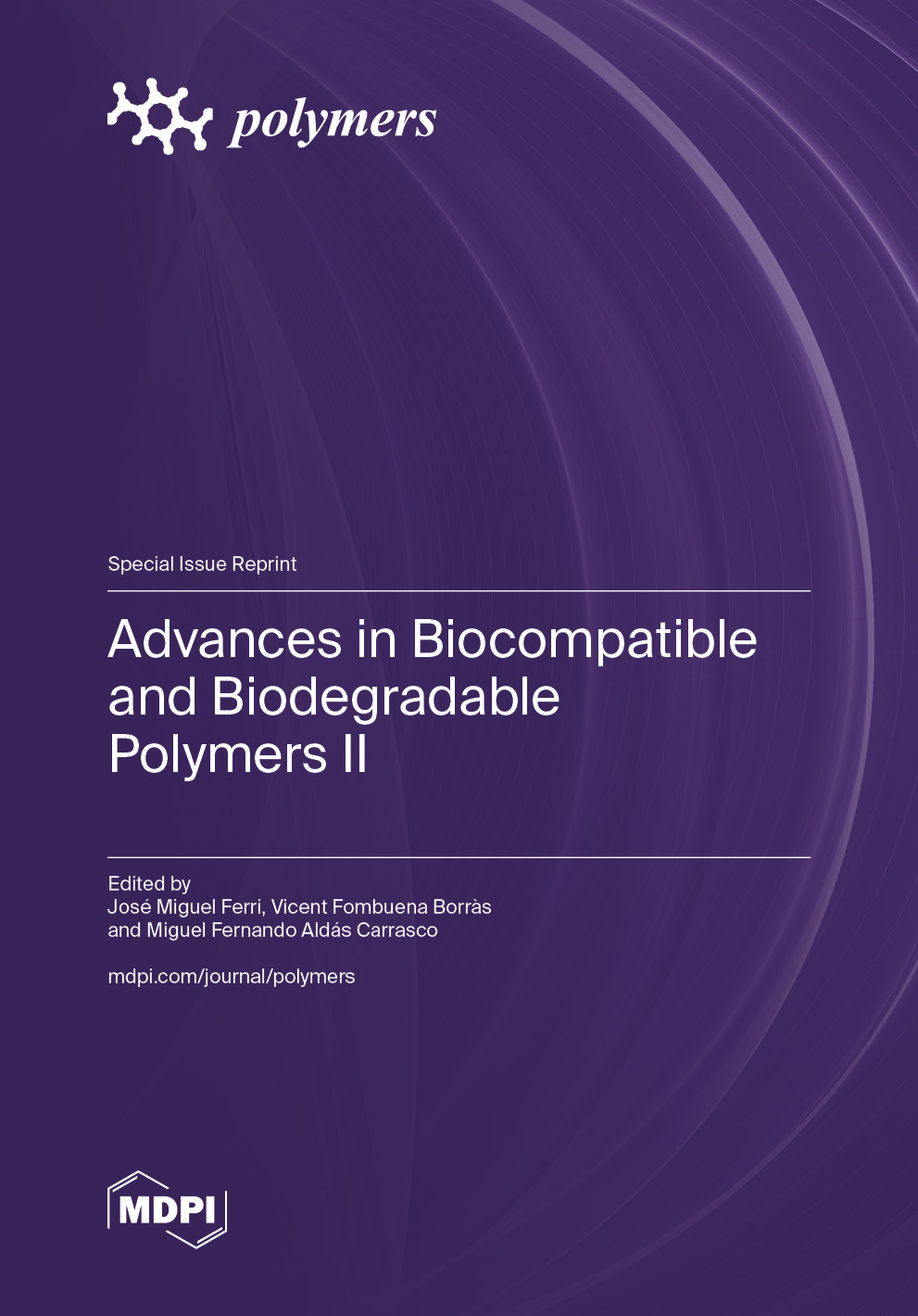Advances in Biocompatible and Biodegradable Polymers II
A special issue of Polymers (ISSN 2073-4360). This special issue belongs to the section "Biomacromolecules, Biobased and Biodegradable Polymers".
Deadline for manuscript submissions: closed (28 February 2023) | Viewed by 43394
Special Issue Editors
Interests: biodegradable polymers; recycling; natural additives; biocomposites; polymer compatibilization; polymer rheology;surface modification fillers; thermal and mechanical properties
Special Issues, Collections and Topics in MDPI journals
Interests: mechanical properties; polymers; composites; surface modification; biodegradable and biocompatible polymers; atmospheric plasma
Special Issues, Collections and Topics in MDPI journals
Special Issue Information
Dear Colleagues,
Among the various strategies to reduce negative environmental impacts due to the uncontrolled consumption and low recovery of conventional plastics, the synthesis of new biodegradable and recyclable plastics is considered one of the most promising. The spectrum of existing biodegradable materials is still very narrow, and so, to achieve greater applicability, mixtures of biodegradable polymers are being investigated using a blending strategy. However, the incompatibilities shown by these mixtures have led to the establishment of several strategies (incorporation of additives, reactive extrusion, copolymerization) to improve this feature.
This Special Issue of Polymers invites contributions that address advances in the synthesis of new biodegradable polymers, new mixtures of biodegradable polymers and in particular compatibility studies, as well as those exploring the influence on their chemical, thermal, mechanical and rheological properties. In addition, we welcome research on the biocompatibility of polymers with the human body, including studies on degradation of physiological serum, and the influence of their mechanical and thermal properties depending on the time of contact with physiological serum.
Dr. José Miguel Ferri
Dr. Vicent Fombuena Borràs
Dr. Miguel Fernando Aldás Carrasco
Guest Editors
Manuscript Submission Information
Manuscripts should be submitted online at www.mdpi.com by registering and logging in to this website. Once you are registered, click here to go to the submission form. Manuscripts can be submitted until the deadline. All submissions that pass pre-check are peer-reviewed. Accepted papers will be published continuously in the journal (as soon as accepted) and will be listed together on the special issue website. Research articles, review articles as well as short communications are invited. For planned papers, a title and short abstract (about 100 words) can be sent to the Editorial Office for announcement on this website.
Submitted manuscripts should not have been published previously, nor be under consideration for publication elsewhere (except conference proceedings papers). All manuscripts are thoroughly refereed through a single-blind peer-review process. A guide for authors and other relevant information for submission of manuscripts is available on the Instructions for Authors page. Polymers is an international peer-reviewed open access semimonthly journal published by MDPI.
Please visit the Instructions for Authors page before submitting a manuscript. The Article Processing Charge (APC) for publication in this open access journal is 2700 CHF (Swiss Francs). Submitted papers should be well formatted and use good English. Authors may use MDPI's English editing service prior to publication or during author revisions.
Keywords
- biodegradable polymers
- biocompatible polymers
- compatibility
- blends
- disintegration
- polymer miscibility









